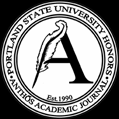Abstract
Accused witches in early modern England were predominantly female, with historians often connecting the witches’ gender to these accusations. However, a small but substantial number of males were also accused of witchcraft. This has sparked debate in the discourse community over whether gender plays a role in witchcraft accusations against males. In their respective articles, witchcraft scholars Millar and Kent both ask how ordinary people during the English witchcraft trials of the sixteenth and seventeenth centuries viewed males accused of witchcraft, arriving at very different conclusions. Millar determines that male witches’ gender is not important, while Kent decides that it is. This paper argues that Millar and Kent’s diverging conclusions stem not from their evidentiary archives but from their differing beliefs on what aspects of the evidence deserve attention.
DOI
10.15760/anthos.2023.12.1.6
Creative Commons License

This work is licensed under a Creative Commons Attribution-NonCommercial-Share Alike 4.0 International License.
Persistent Identifier
https://archives.pdx.edu/ds/psu/40344
Recommended Citation
Mintiero, Giuliana T.
(2023)
"Diabolical or Masculine Men? Opposing Views of Male Witches in Early Modern England,"
Anthós:
Vol. 12:
Iss.
1, Article 6.
https://doi.org/10.15760/anthos.2023.12.1.6
